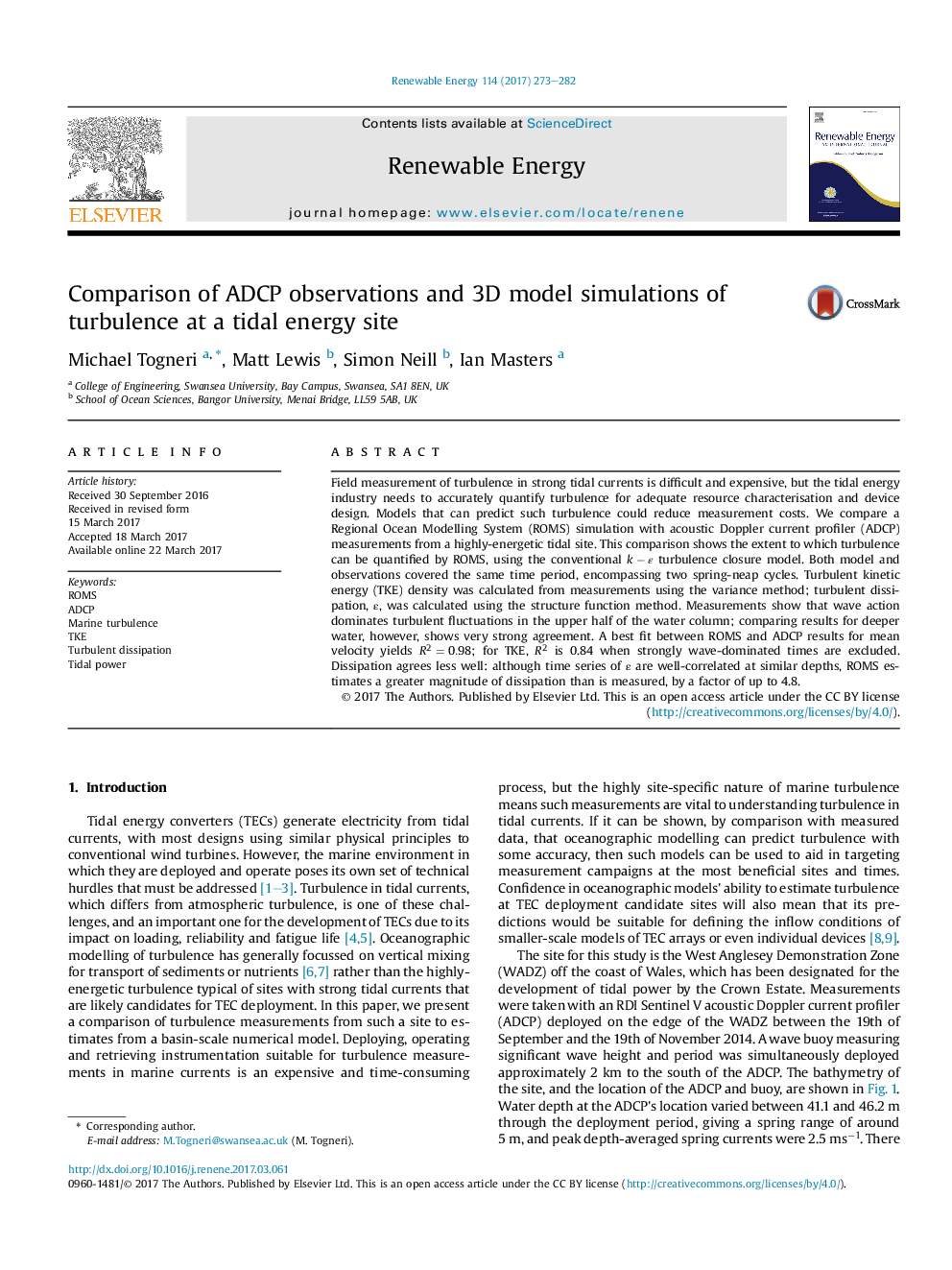| Article ID | Journal | Published Year | Pages | File Type |
|---|---|---|---|---|
| 4925976 | Renewable Energy | 2017 | 10 Pages |
â¢Two months of ROMS and ADCP turbulence data at an energetic tidal site are compared.â¢Wave action is strongly dominant in the upper half of the water column.â¢Good agreement between predicted and measured turbulent kinetic energy at low depths.â¢Dissipation predictions show poorer agreement.
Field measurement of turbulence in strong tidal currents is difficult and expensive, but the tidal energy industry needs to accurately quantify turbulence for adequate resource characterisation and device design. Models that can predict such turbulence could reduce measurement costs. We compare a Regional Ocean Modelling System (ROMS) simulation with acoustic Doppler current profiler (ADCP) measurements from a highly-energetic tidal site. This comparison shows the extent to which turbulence can be quantified by ROMS, using the conventional kâε turbulence closure model. Both model and observations covered the same time period, encompassing two spring-neap cycles. Turbulent kinetic energy (TKE) density was calculated from measurements using the variance method; turbulent dissipation, ε, was calculated using the structure function method. Measurements show that wave action dominates turbulent fluctuations in the upper half of the water column; comparing results for deeper water, however, shows very strong agreement. A best fit between ROMS and ADCP results for mean velocity yields R2=0.98; for TKE, R2 is 0.84 when strongly wave-dominated times are excluded. Dissipation agrees less well: although time series of ε are well-correlated at similar depths, ROMS estimates a greater magnitude of dissipation than is measured, by a factor of up to 4.8.
